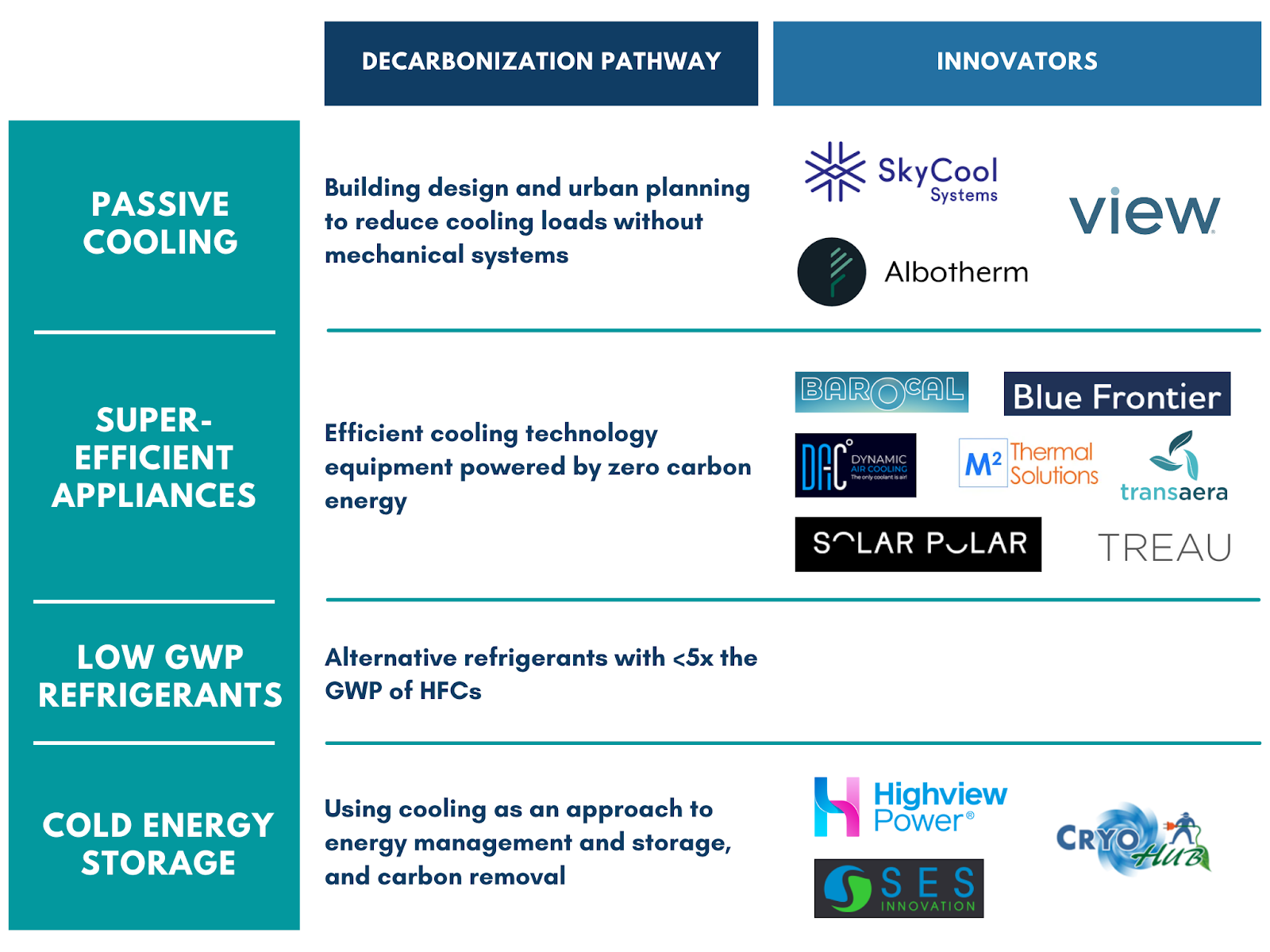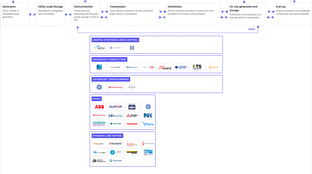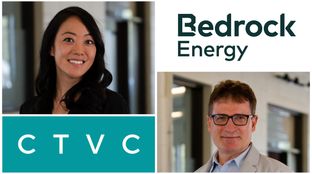
🌏 The bits and bytes of grid tech
(Bonus edition) Part III: The software “middleware” layer for grid operators / utilities
It’s just about that time of the year (in NYC, at least) when that special type of condensation starts falling from millions of overworked AC window units. As we performed electrician acrobatics reinstalling our own window unit, it got us thinking about the scale of the cooling industry. As it turns out, we weren’t the only ones with HVAC on the mind these past few weeks.
In its first significant step under the Biden administration, last week the EPA proposed regulating hydrofluorocarbons (HFCs), a man-made chemical frequently used in refrigerants and air conditioners. Driven by the Montreal Protocol, HFCs were created in the 1980s to replace their ozone-depleting F-gas cousins the chlorofluorocarbon (CFCs) and hydrochlorofluorocarbon (HCFCs). Although the ozone hole has all but sealed back up, ironically, HFCs have themselves turned out to have a 1,000x to 9,000x higher Global Warming Potential compared to CO2! The EPA regulation would follow the phasedown set by the Kigali Amendment and reduce the production and importation of HFCs by 85% from 2022 through the mid-2030s. This would eliminate an estimated 4.7b mT CO2 - aka 3 years’ worth of the entire US power sector’s emissions!
Cooling is critical to health and prosperity - it keeps our food, vaccines, and buildings fresh and livable. Cooling is also in a perverse positive feedback loop: the more we use, the hotter the world gets, and the more we need.
As emerging economies develop, so will their demand for thermal comfort - an essential human need in countries where heat is otherwise unbearable without AC, and only getting hotter with climate change. Likewise, as compute requirements increase and logistics and transportation expand their reach, so will demand for cooling in data centers and throughout the supply chain.
Cooling accounts for more than 7% of global GHG emissions (more than shipping and aviation combined), and is expected to triple to 25% (!) of emissions. Emissions come from two vectors: electricity and refrigerants. Global electricity demand for cooling in 2018 was ~100 TWh hours, or equivalent to all of the electricity consumed by G8 countries! But it’s refrigerants, not electricity, that cause the greatest emissions from cooling. “Even if we flipped a switch to 100% renewables tomorrow, a full 2/3rds of cooling’s emissions would still need to be tackled,” notes Paul Huggins of Carbon Trust, a consultancy which recently released a Net Zero Cooling Pathway. That’s because most cooling systems are based on vapor compression refrigeration, which uses a liquid refrigerant to absorb and remove heat. These liquid refrigerants (F-gases) are leaked into the atmosphere during production of appliances and at end-of-life disposal. 90% of refrigerant emissions happen at disposal, and are entirely avoidable with correct handling.
According to Carbon Trust, “the recent EPA HFC regulation and the Kigali Amendment aren’t enough. To get to net zero over the next 5-10 years, we need massive amounts of technology innovation and activity to address the problems that still remain.” The report notes that of the ~50 cooling majors, only a few are addressing climate. “The major incumbent providers can’t get to net zero themselves and will be highly acquisitive once early technologies are derisked,” predicts Huggins.
To spur the development of (residential) cooling solutions with 5x lower climate impact, a global coalition initiated by the Government of India, Mission Innovation, and RMI launched the Global Cooling Prize. The $3m purse of prize money attracted 2000+ registrants from 96 countries, and just announced the final winners. Gree in partnership with Tsinghua University and Daikin in partnership with Nikken Sekkei took home the prize for their 80% more efficient cooling systems, alongside eight finalists including venture-backed startups Transaera and M2 Thermal Solutions. Transaera CEO Sorin Grama says, “Air conditioning has not fundamentally changed since being invented more than 100 years ago. The laws of nature are unforgiving which makes thermodynamic systems difficult to improve.” Of the Global Cooling Prize, he says “Transaera was the only startup in the competition to complete the field trials (alongside 3 of the largest AC manufacturers in the world.) We’re proud of that!”

There are three levers to manage down the footprint of the cooling industry.
Approaches:
Efficiency gains in advanced vapor compression technology
Alternative cooling technologies like evaporative cooling (cooling hot air through water evaporation), solid-state cooling (replace HFCs with solid organic ‘plastic crystal’ materials), heat pumps (reverse heat process transfers to return cool air inside)
Innovators: Blue Frontier (desiccant-enhanced evaporative cooling), Treau (D2C residential appliances), Transaera (metal-organic frameworks to reduce humidity), M2 Thermal Solutions (evaporative cooling membrane technology), Barocal (solid-state barocaloric cooling), Dynamic Air Cooling (replace HFCs with air to transfer heat), Solar Polar (solar-based cooling)
Startup spotlight on Blue Frontier CEO Daniel Betts: “We have developed an ultra-efficient air conditioner with native energy storage which reduces electricity consumption by up to 90%. Our AC uses electricity to increase the concentration of a salt solution by evaporating water from it using a novel highly efficient process. The high concentration salt solution acts like a sponge that has been squeezed and is ready to absorb water. When air conditioning is required, the salt solution absorbs humidity and creates dry air which is then cooled using indirect evaporative cooling. The result is low humidity, low temperature air with minimal electricity consumption.”
Approaches:
Ultra-low GWP natural refrigerants (GWP: 0-3) like ammonia (GWP: 0), carbon dioxide (GWP: 1), and hydrocarbons (GWP: 3). Though low cost and abundant, NFs pose safety challenges (e.g. flammability, toxicity) and aren’t dense enough for residential use.
Low-GWP HFCs like HFC-32 (GWP: 677) and HFC-152a (GWP:138) which can viably replace popular >GWP HFCs, but are more expensive.
Hydrofluoroolefins like HFO-1234yf (GWP: <1) have been developed as blends for specific applications, like replacing HFC-134a. Our bet is on HFOs as the most viable ultra-low GWP replacements. Plus, it’s an excuse to say HydrofluoroolefinHydrofluoroolefinHydrofluoroolefin!
Approaches:
Demand side response: turning down large AC or refrigeration systems during peak electricity demand periods
Liquid air energy storage: using excess renewable energy to cryogenically cool liquids at low pressure, then later heat and expand to drive a turbine and generate power
Cryogenic CCS: using the cryogenic cooling process to capture CO2 since at desublimation temperatures CO2 separates out as a solid
Innovators: Highview Power (long duration energy storage ‘CRYOBattery’ breaking ground on a 50 MW project), CryoHub (EU cryogenic energy storage project), SES Innovation (cryogenic carbon capture)
Thanks to Sophie Bordat and Paul Huggins at Carbon Trust for sharing their expertise as background for this feature. If you’re a fan of HVAC, Transaera is looking for team members, partners, and investors to help scale the technology. Reach out to Sorin Grama.

(Bonus edition) Part III: The software “middleware” layer for grid operators / utilities

Part II: How grid tech is the rails of the energy transition

The Goldilocks effect in geothermal HVAC systems